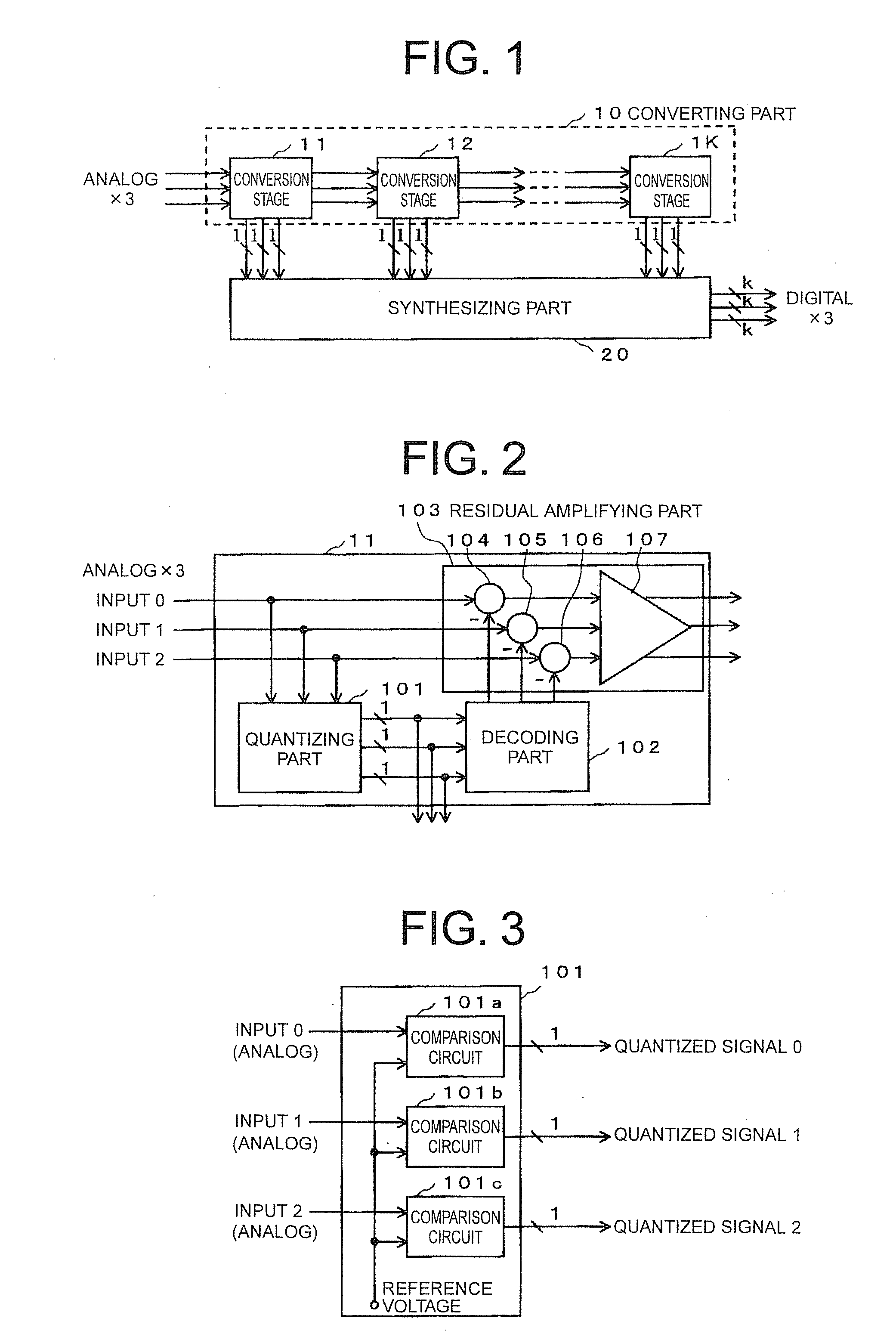Ad converter and radio receiver
a radio receiver and converter technology, applied in analogue/digital conversion, transmission systems, instruments, etc., can solve problems such as power saving and power saving, and achieve the effects of reducing the number of inputs, cost reduction, and reducing the number of elements needed
- Summary
- Abstract
- Description
- Claims
- Application Information
AI Technical Summary
Benefits of technology
Problems solved by technology
Method used
Image
Examples
Embodiment Construction
Description of Embodiments
[0052]Embodiments of the present invention will be described with reference to the drawings, but these drawings are provided only for an illustrative purpose and in no way limit the present invention.
[0053]A possible form in one aspect and another aspect mentioned above is such that the n is 2, the m is 3, each of three parallel first quantized signals and three parallel second quantized signals generated by the first and second quantizing parts of the first and second conversion stages consists of 1-bit, and the constant multiplier of the first residual amplifying part is substantially two. In this case, three analog signals representing two-dimensional vectors (for example, consisting of an I(t) component and a Q(t) component) are input signals. The three analog signals may be, for example, signals of (I / 2, −I / 4−√3·Q / 4, −¼+√3·Q / 4). Further, since each of the three parallel quantized signals consists of 1-bit information, the construction of the quantizing...
PUM
 Login to View More
Login to View More Abstract
Description
Claims
Application Information
 Login to View More
Login to View More - R&D
- Intellectual Property
- Life Sciences
- Materials
- Tech Scout
- Unparalleled Data Quality
- Higher Quality Content
- 60% Fewer Hallucinations
Browse by: Latest US Patents, China's latest patents, Technical Efficacy Thesaurus, Application Domain, Technology Topic, Popular Technical Reports.
© 2025 PatSnap. All rights reserved.Legal|Privacy policy|Modern Slavery Act Transparency Statement|Sitemap|About US| Contact US: help@patsnap.com



